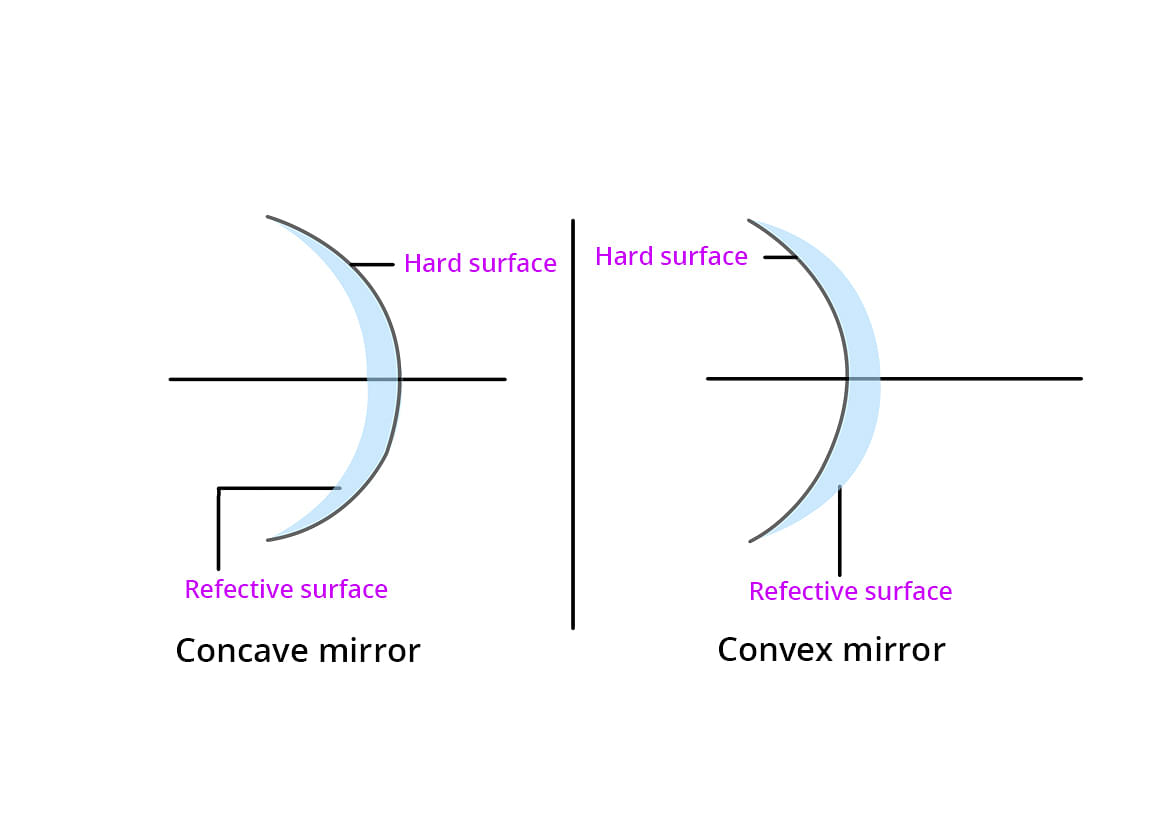Question:
A convex lens made of glass has focal length $0.15\, m$ in air. If the refractive index of glass is $3/2$, and that of water is $4/3$ the focal length of lens when immersed in water is
A convex lens made of glass has focal length $0.15\, m$ in air. If the refractive index of glass is $3/2$, and that of water is $4/3$ the focal length of lens when immersed in water is
Updated On: Apr 23, 2024
- 0.15 m
- 0.30 m
- 0.6 m
- 0.45 m
Hide Solution
Verified By Collegedunia
The Correct Option is C
Solution and Explanation
Given, $f_{a}=0.15 \,m , \mu_{g}=\frac{3}{2}, \mu_{w}=\frac{4}{3}$
According to Lens maker's formula
$\frac{1}{f} =(\mu-1)\left(\frac{1}{R_{1}}-\frac{1}{R_{2}}\right) \,\,\,\,\,\,$ where $\mu=\frac{\mu_{L}}{\mu_{M}} $
$\frac{1}{f_{a}} =\left(\frac{\mu_{g}}{\mu_{a}}-1\right)\left(\frac{1}{R_{1}}-\frac{1}{R_{2}}\right) $
$=\left(\frac{(3 / 2)}{1}-1\right) C\,\,\,\,\,\,\,\, $ where $ C=\left(\frac{1}{R_{1}}-\frac{1}{R_{2}}\right)$
or $\,\,\,\frac{1}{f_{a}}=\frac{C}{2}\,\,\,\,\,\,\,\,...(i)$
Also, $\frac{1}{f_{w}}=\left(\frac{\mu_{g}}{\mu_{w}}-1\right)\left(\frac{1}{R_{1}}-\frac{1}{R_{2}}\right)=\left(\frac{(3 / 2)}{(4 / 3)}-1\right) C$
or $\,\,\,\,\,\frac{1}{f_{w}}=\frac{C}{8}\,\,\,\,\,\,\,\,...(ii)$
From Eqs. (i) and (ii), we get
$\frac{f_{w}}{f_{a}}=\frac{C}{2} \times \frac{8}{C}=4$
or$\,\,\,\,\,\,f_{w}=4 f_{a}$
$=4 \times 0.15=0.6\, m$
According to Lens maker's formula
$\frac{1}{f} =(\mu-1)\left(\frac{1}{R_{1}}-\frac{1}{R_{2}}\right) \,\,\,\,\,\,$ where $\mu=\frac{\mu_{L}}{\mu_{M}} $
$\frac{1}{f_{a}} =\left(\frac{\mu_{g}}{\mu_{a}}-1\right)\left(\frac{1}{R_{1}}-\frac{1}{R_{2}}\right) $
$=\left(\frac{(3 / 2)}{1}-1\right) C\,\,\,\,\,\,\,\, $ where $ C=\left(\frac{1}{R_{1}}-\frac{1}{R_{2}}\right)$
or $\,\,\,\frac{1}{f_{a}}=\frac{C}{2}\,\,\,\,\,\,\,\,...(i)$
Also, $\frac{1}{f_{w}}=\left(\frac{\mu_{g}}{\mu_{w}}-1\right)\left(\frac{1}{R_{1}}-\frac{1}{R_{2}}\right)=\left(\frac{(3 / 2)}{(4 / 3)}-1\right) C$
or $\,\,\,\,\,\frac{1}{f_{w}}=\frac{C}{8}\,\,\,\,\,\,\,\,...(ii)$
From Eqs. (i) and (ii), we get
$\frac{f_{w}}{f_{a}}=\frac{C}{2} \times \frac{8}{C}=4$
or$\,\,\,\,\,\,f_{w}=4 f_{a}$
$=4 \times 0.15=0.6\, m$
Was this answer helpful?
4
0
Top Questions on Spherical Mirrors
- A concave mirror produces an image of an object such that the distance between the object and image is 20 cm. If the magnification of the image is \( -3 \), then the magnitude of the radius of curvature of the mirror is:
- JEE Main - 2025
- Physics
- Spherical Mirrors
- (ii) An object at a distance of 16 cm from a spherical mirror forms a virtual image at a distance of 12 cm behind the mirror. Determine the magnification of the image and type of the mirror.
- UP Board X - 2025
- Science
- Spherical Mirrors
- Image of an object formed by a concave mirror is real and of the size of the object. The object is placed -
- UP Board X - 2025
- Science
- Spherical Mirrors
- With the help of a suitable ray diagram, derive the formula \( \frac{1}{v} + \frac{1}{u} = \frac{1}{f} \) for a concave mirror.
- UP Board XII - 2025
- Physics
- Spherical Mirrors
- The length of the image formed by a concave mirror:
- UP Board XII - 2025
- Physics
- Spherical Mirrors
View More Questions
Questions Asked in KCET exam
- At 27°C temperature, the mean kinetic energy of the atoms of an ideal gas is \( E_1 \). If the temperature is increased to 327°C, then the mean kinetic energy of the atoms will be
- KCET - 2025
- simple harmonic motion
- A potential at a point A is 3 V and that at another point B is 5 V. What is the work done in carrying a charge of 5 mC from B to A?
- KCET - 2025
- Electric Field
The circuit shown in the figure contains two ideal diodes \( D_1 \) and \( D_2 \). If a cell of emf 3V and negligible internal resistance is connected as shown, then the current through \( 70 \, \Omega \) resistance (in amperes) is:

- KCET - 2025
- Refractive index
- The mean deviation about the mean for the data \( 4, 7, 8, 9, 10, 12, 13, 17 \) is:
- KCET - 2025
- measurement of angles
- The distance of the point \( P(-3,4,5) \) from the yz-plane is:
- KCET - 2025
- Distance of a Point From a Line
View More Questions
Concepts Used:
Spherical Mirrors
A spherical mirror is a mirror which has been cut out of a spherical surface.
There are two kinds of spherical mirrors:
- Convex Mirror
- Concave Mirror

Concave Mirror
Concave mirrors are also called converging mirrors, because in these types of mirrors, light rays converge at a point after impact and reflect back from the reflective surface of the mirror.
Convex Mirror
The convex mirror has a reflective surface that is curved outward. Regardless of the distance between the subject and the mirrors, these mirrors are "always" virtual, upright and reduced.